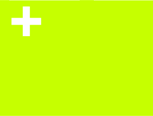days with glass edges
Programme Note
days with glass edges (chasing the butterflies in my wallpaper) is for fifteen-piece ensemble and 4-channel electronics. The title is a composite drawn from two Charles Bukowski poems found in the collection Burning in Water, Drowning in Flame (Part II, 1963-65). Here are two short extracts, one from each:
something for the touts, the nuns, the grocery clerks and you…
we have everything and we have nothing ---
days with glass edges and the impossible stink
of river moss
don't come round but if you do
maybe I have broken my jaw
and am looking for wire
or I am chasing the butterflies in
my wallpaper
I mean if I don't answer
I don't answer, and the reason is
that I am not yet ready to kill you
or love you, or even accept you
Ranging from repellent gutter talk to fine-grained, unflinchingly honest observations of human nature (often in combination), Bukowski's output remains a powerful challenge to authority and bourgeois sensibilities even a quarter century after his death. His work has stimulated mine for half of my life, despite the repulsion I often feel when confronted with either the words or the man behind them. I cannot speak here of a structural connection between my music and these poems, just a feeling of shared experience: across cultures, time, and art forms.
Technically now, the piece was conceived, generated, and elaborated in software for four generic chord-playing instruments. The harmony investigated here was obtained from the steady-state spectra of the four bronze bells used in various ways by the woodwind players throughout the piece. What I love about working with these unique spectra—besides the process of filtering and the obvious first step of manipulating them so that they are playable on the chosen instruments—is walking the tightrope between unconstrained microtonal dissonance and syrupy triad or octave-dominated tonal reminiscences. It's all about the mapping and being open to the Aha! moments which arrive whilst evaluating material you have explicitly derived but which you'd never intuitively reach for.
Once the whole form of the piece was propagated in software and my ears were happy with the results, I developed an orchestration algorithm that sought particular groups of instruments to map the chords onto—again, it's all in the mapping. The resulting software-generated score became a framework to further stimulate more direct responses and editorial interventions to achieve the final score via standard composerly means, i.e., with pencil and paper, where a lot of the work still remains in almost all my algorithmic works.
P.S. The keyboard part drives a custom sound engine built by yours truly on a composite of granular and additive synthesis (rough vs. pure: hello again Mr. B.). It also triggers four-channel sound files. The latter are intricate mixes of sonic material also generated algorithmically, with the same data structures as the instrumental score, and using as input both analogue synthesizer models—some quite self-consciously cheesy, to match the occasional harmony—and samples of various provenance.


